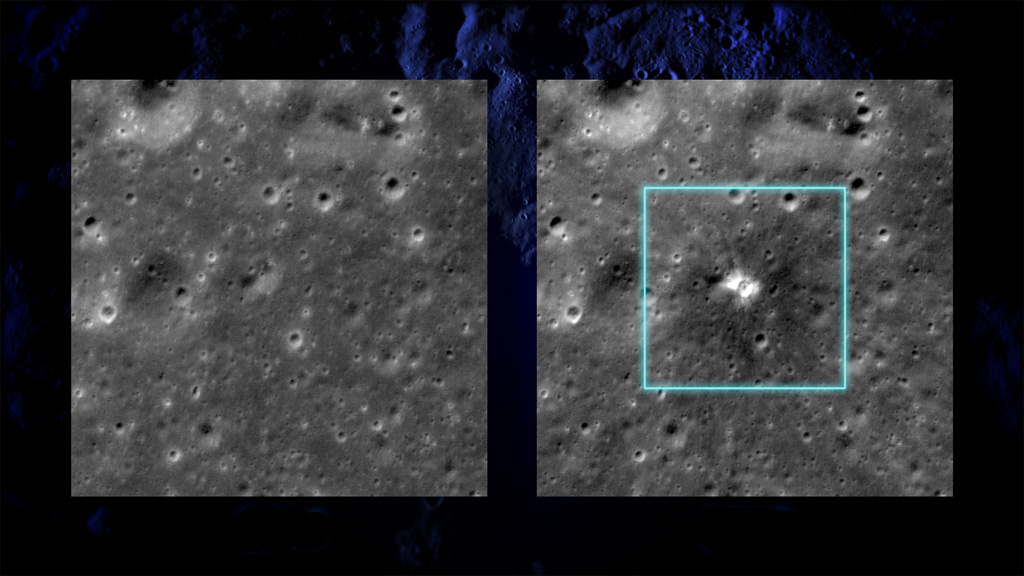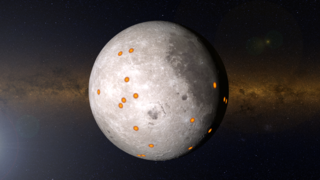Planets and Moons
ID: 11847

When humans colonize the moon—or at least send astronauts or robots to work on it—they will want to know how often space rocks crash into its surface and how big the resulting craters are formed and where. To understand the rate and size of such impact events, scientists have been exploring lunar terrain with a series of high-resolution and UV-sensing cameras from NASA’s Lunar Reconnaissance Orbiter (LRO) since 2009. As the spacecraft swoops around the moon, it snaps images of the surface and sends them back to Earth so scientists can scan for new craters. Over the past six years, LRO has detected hundreds of changes on the moon’s surface and identified more than two dozen new impact craters, including a 60-foot in diameter crater that formed on March 17, 2013. Watch the video to learn more.



Crater Patrol




Related Stories
For More Information
Story Credits
Lead Visualizer/Animator:
Ernie Wright (USRA)
Visualizers/Animators:
Chris Meaney (HTSI)
Chris Smith (Self)
Lead Producer:
Dan Gallagher (USRA)
Producer:
John Caldwell (Advocates in Manpower Management, Inc.)
Scientists:
Mark Robinson (Arizona State University)
John Keller (NASA/GSFC)
Noah Petro (NASA/GSFC)
Videographer:
Rob Andreoli (Advocates in Manpower Management, Inc.)
Lead Writer:
Julia Calderone (USRA)
Ernie Wright (USRA)
Visualizers/Animators:
Chris Meaney (HTSI)
Chris Smith (Self)
Lead Producer:
Dan Gallagher (USRA)
Producer:
John Caldwell (Advocates in Manpower Management, Inc.)
Scientists:
Mark Robinson (Arizona State University)
John Keller (NASA/GSFC)
Noah Petro (NASA/GSFC)
Videographer:
Rob Andreoli (Advocates in Manpower Management, Inc.)
Lead Writer:
Julia Calderone (USRA)
Please give credit for this item to:
NASA's Goddard Space Flight Center
NASA's Goddard Space Flight Center
Short URL to share this page:
https://svs.gsfc.nasa.gov/11847
Keywords:
SVS >> App
NASA Science >> Planets and Moons
https://svs.gsfc.nasa.gov/11847
Keywords:
SVS >> App
NASA Science >> Planets and Moons









